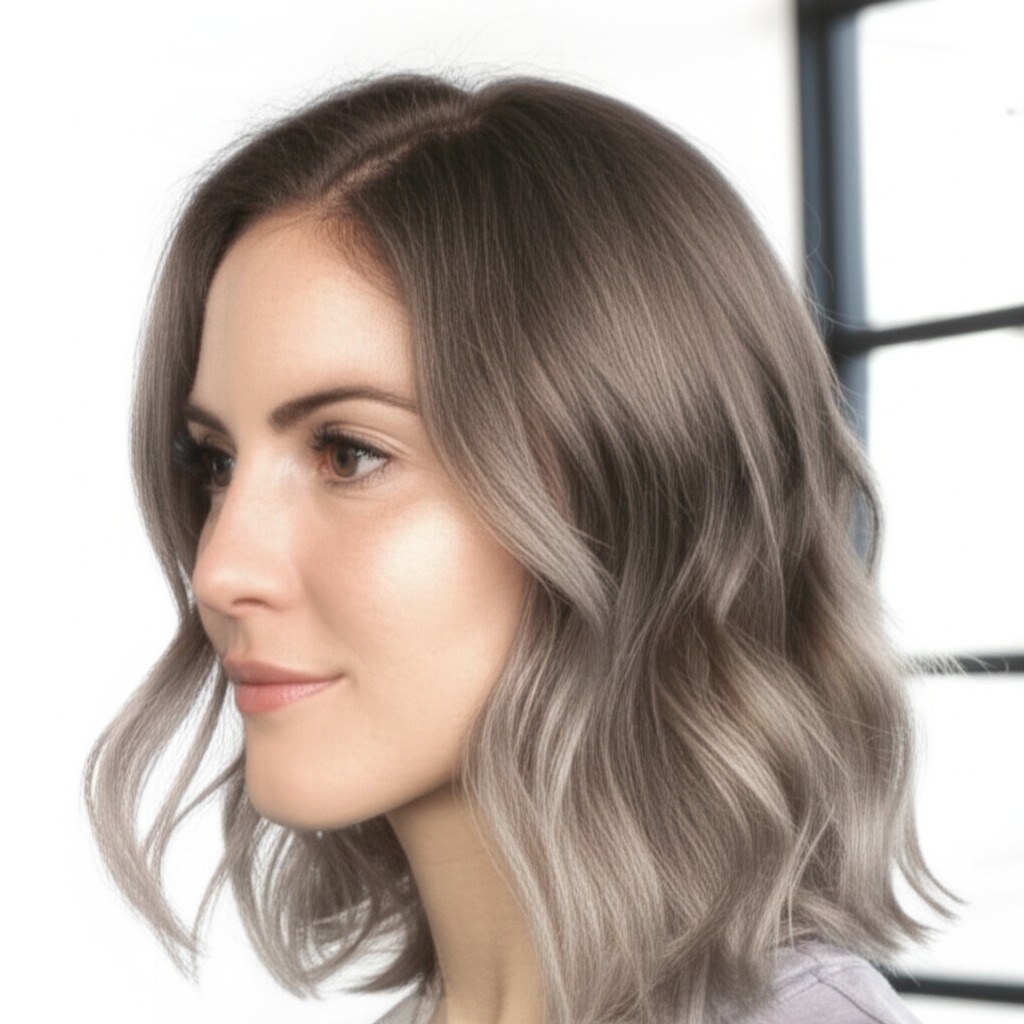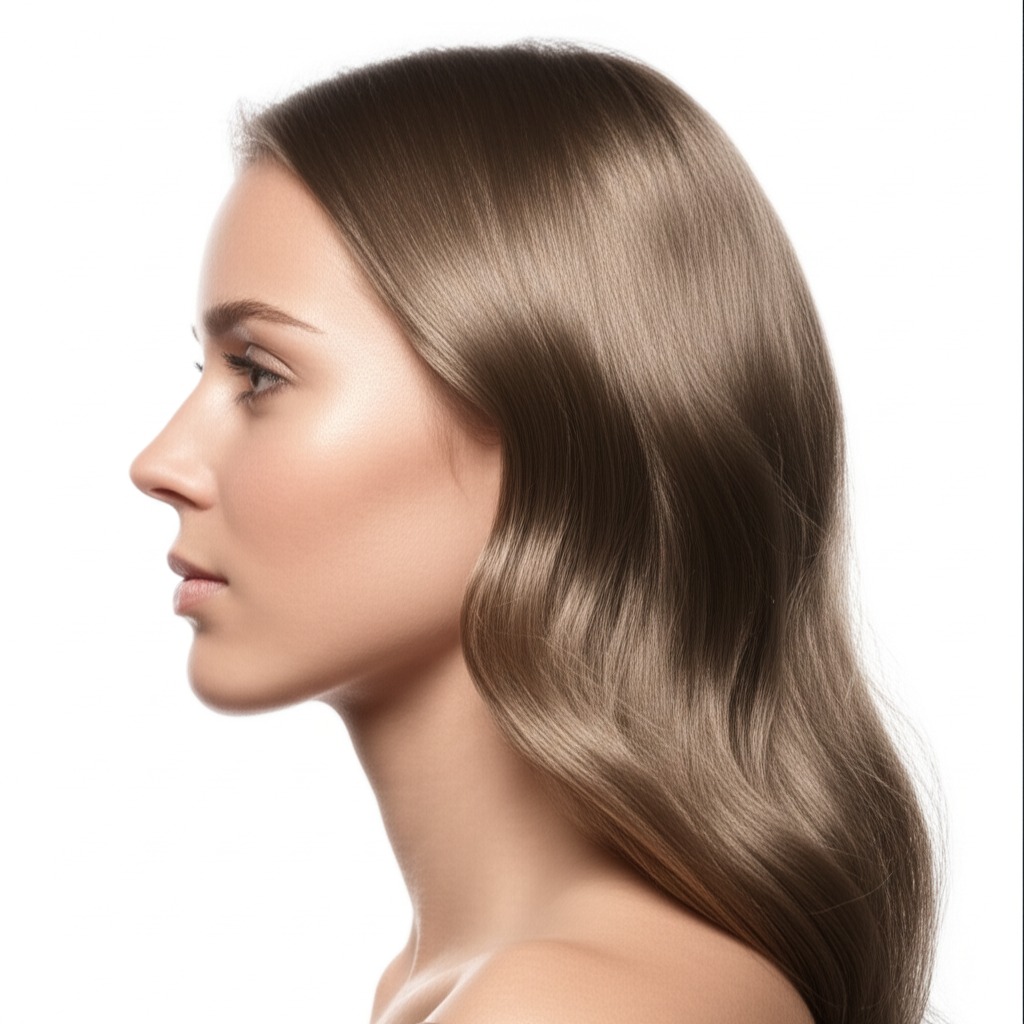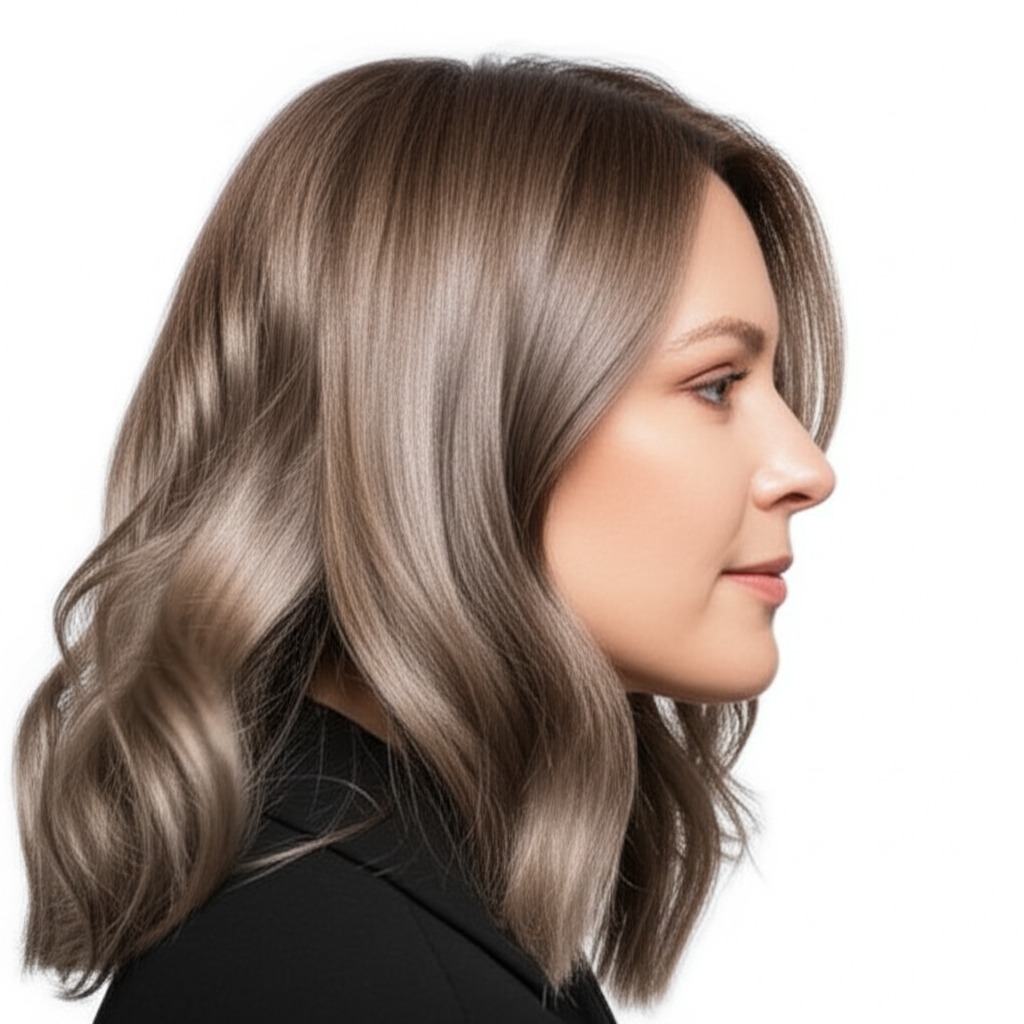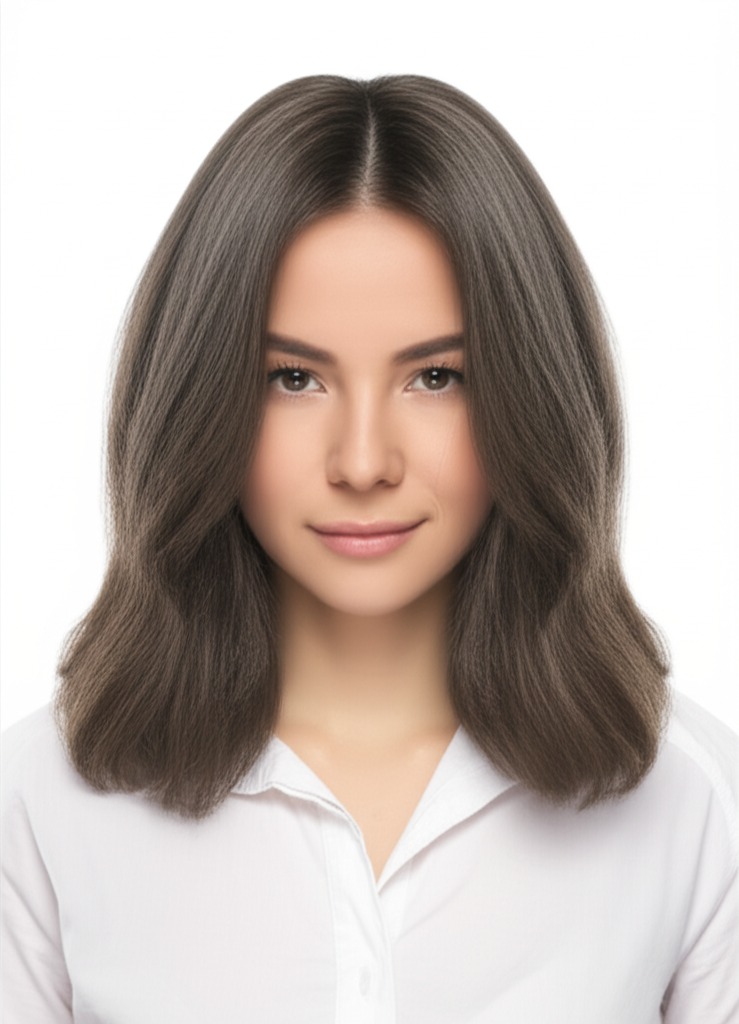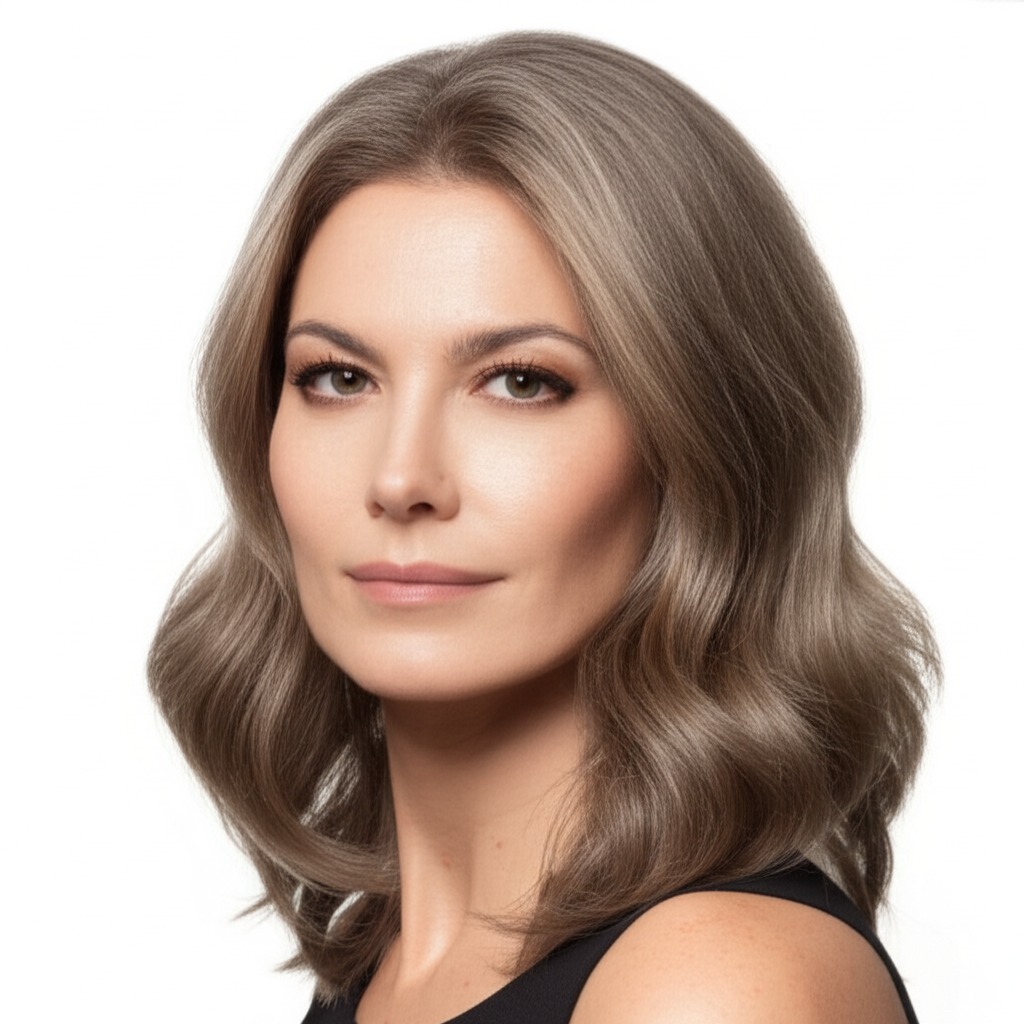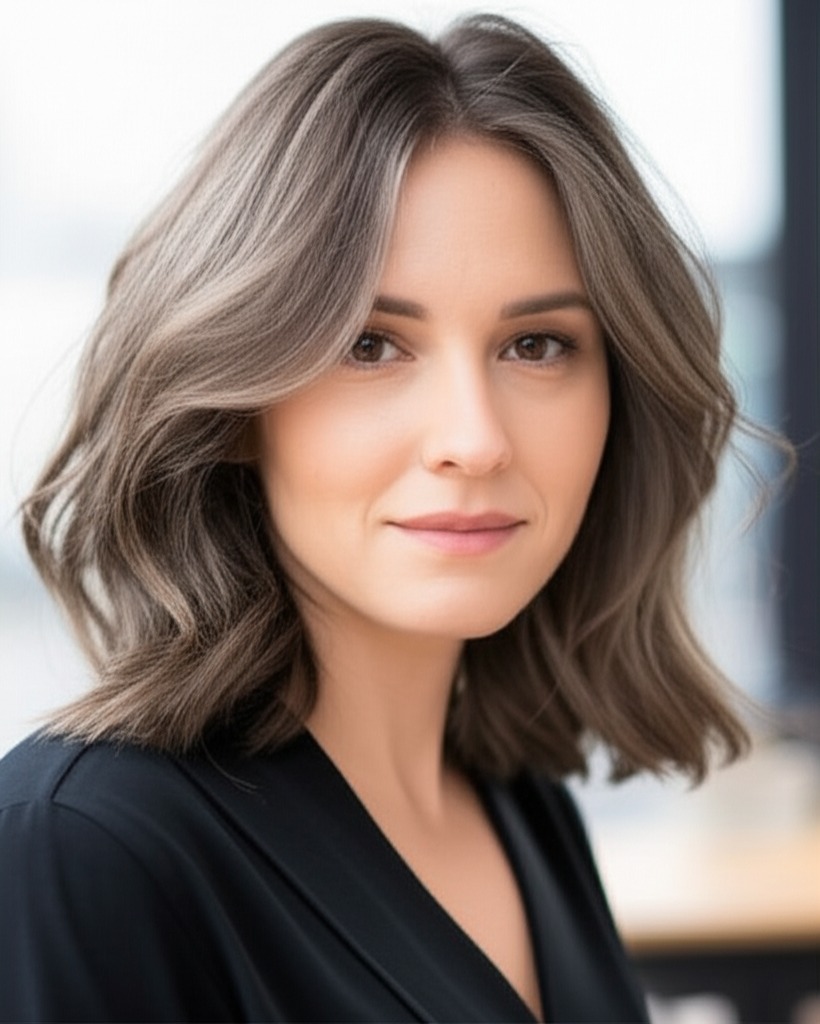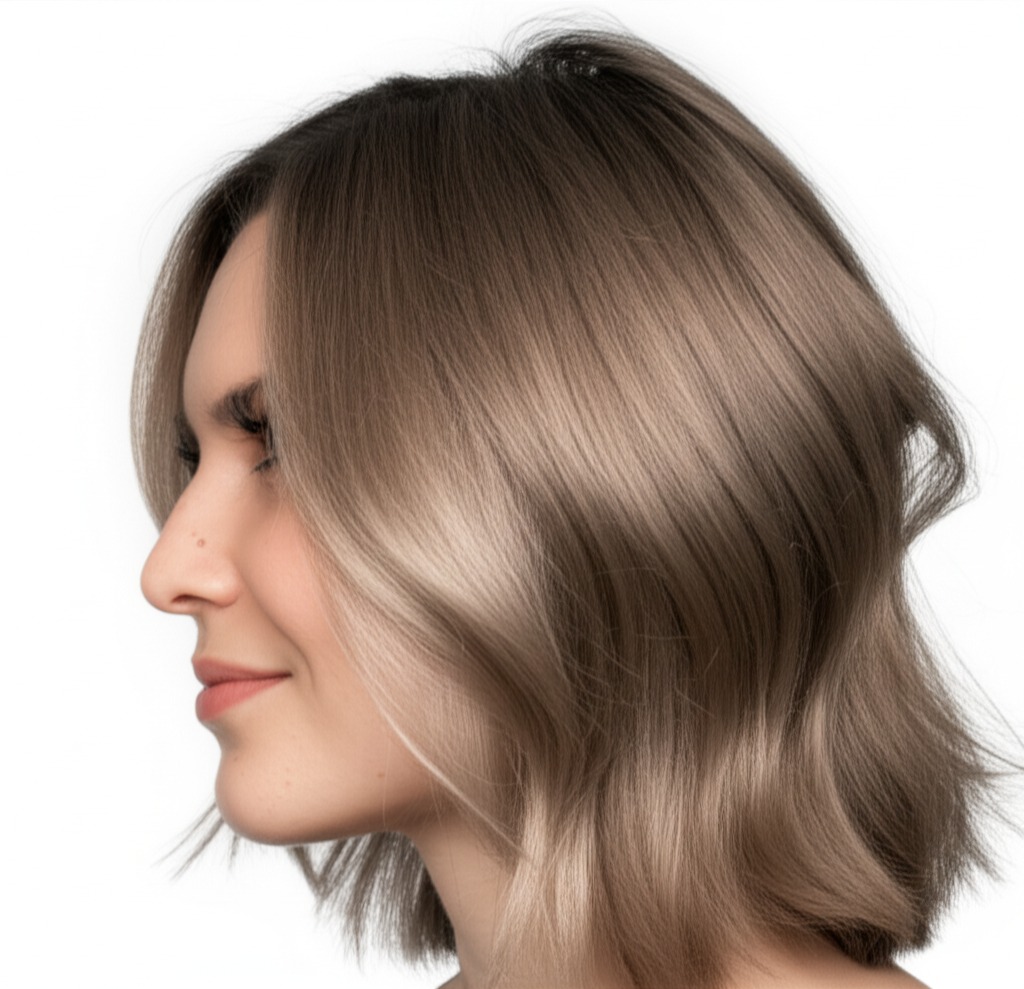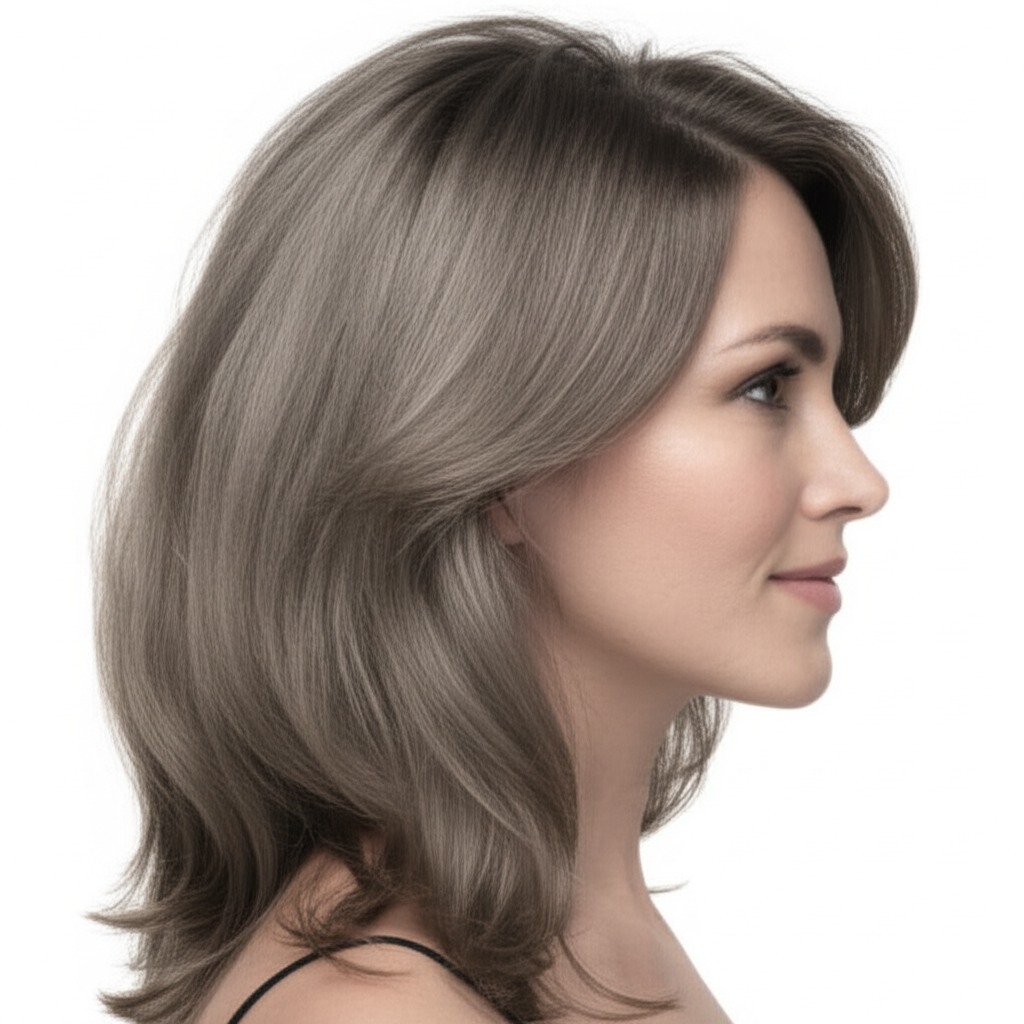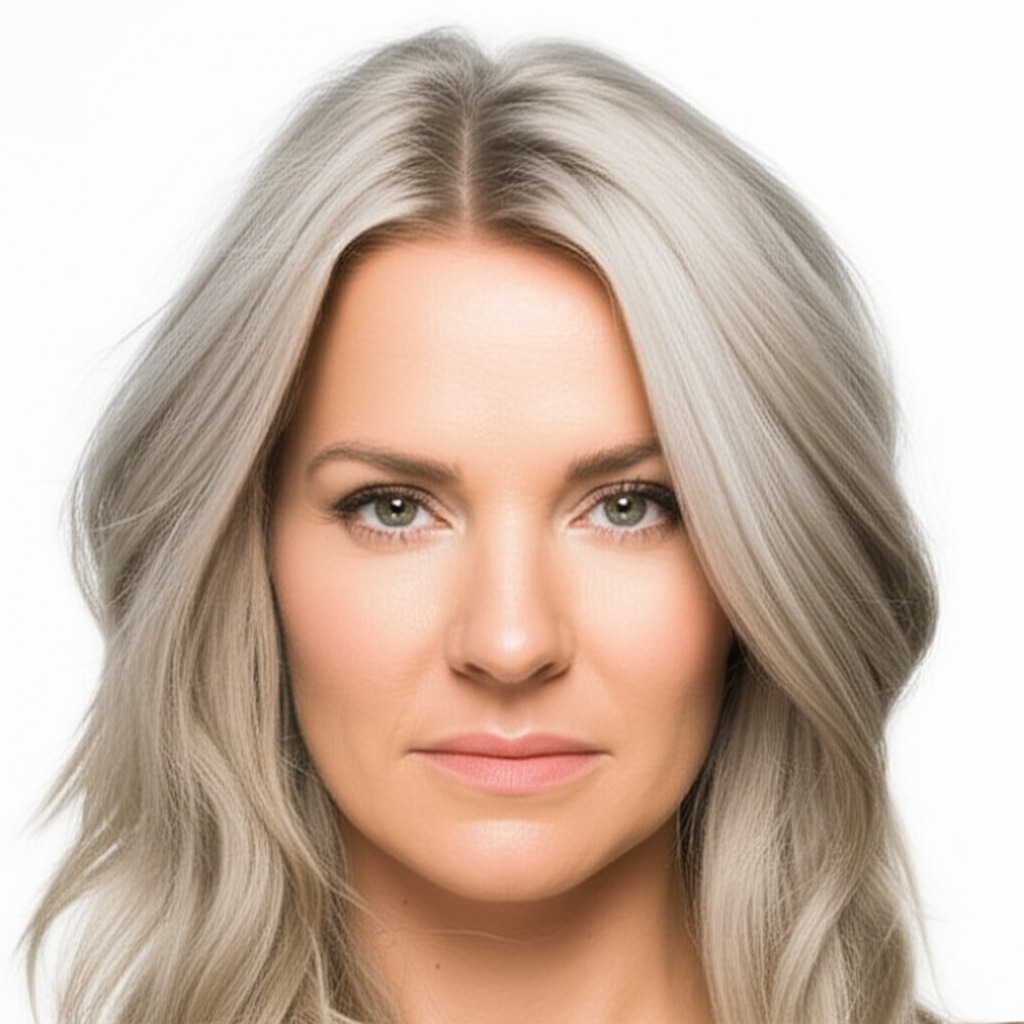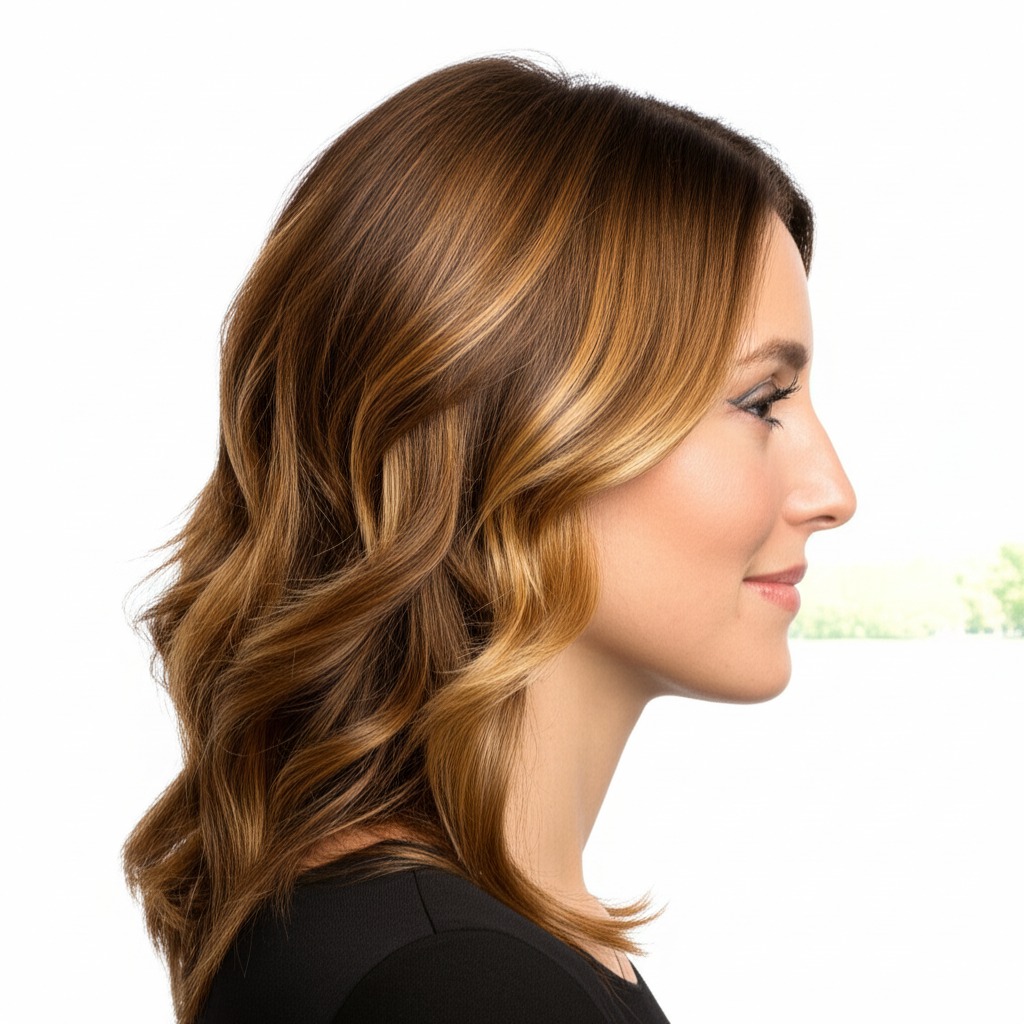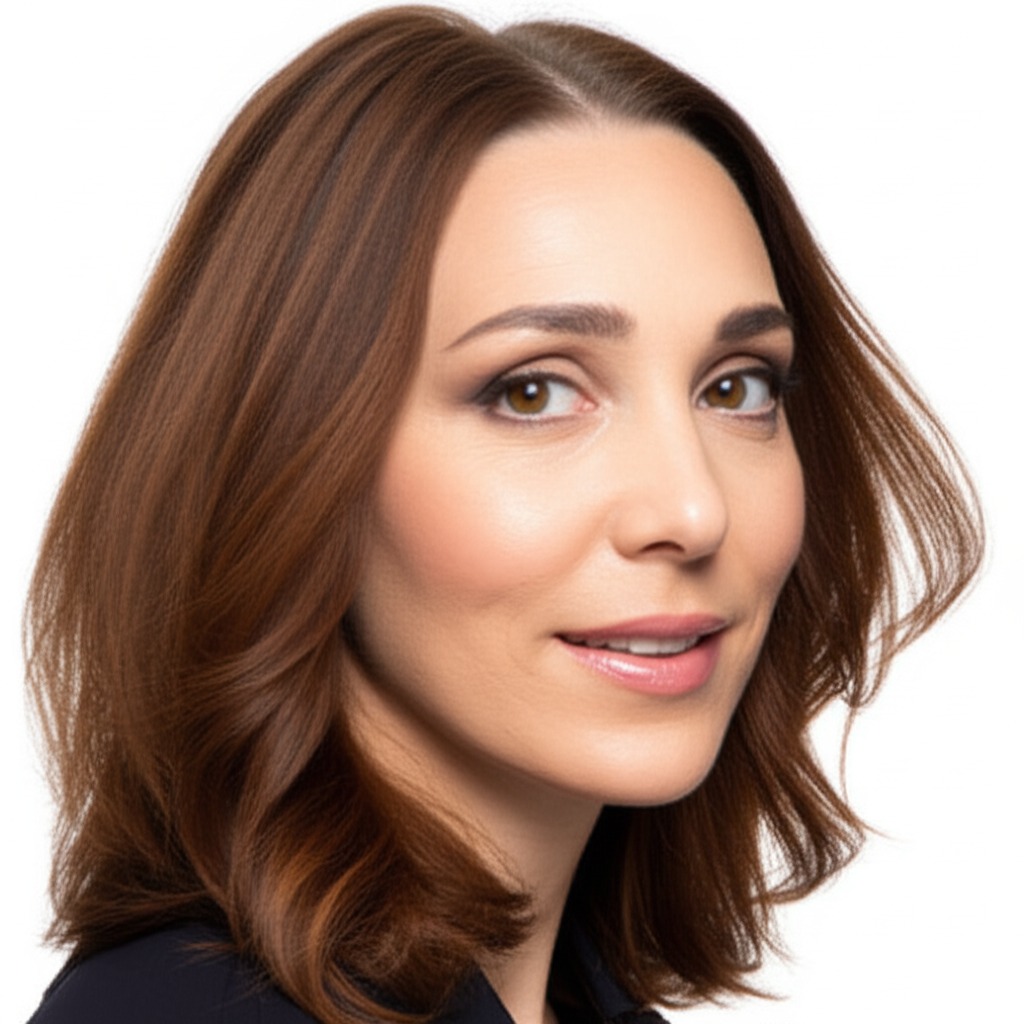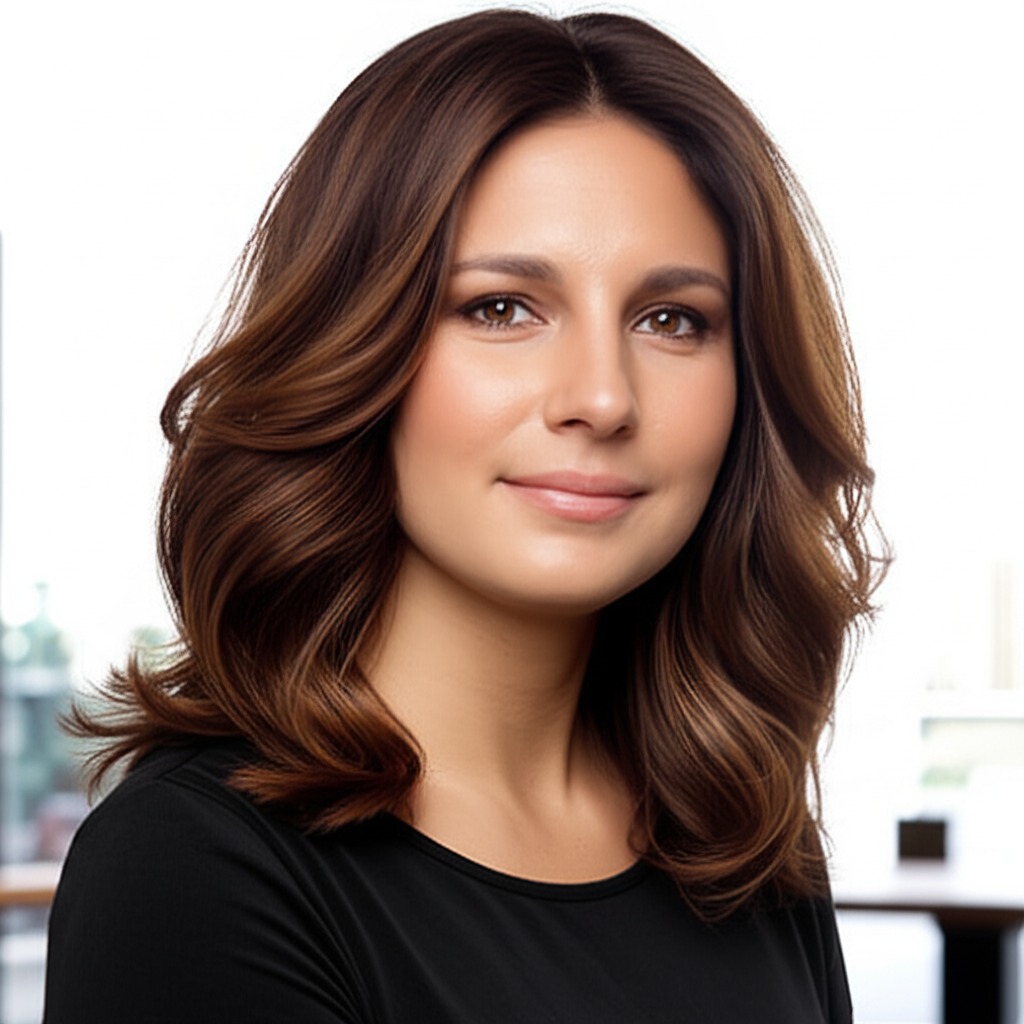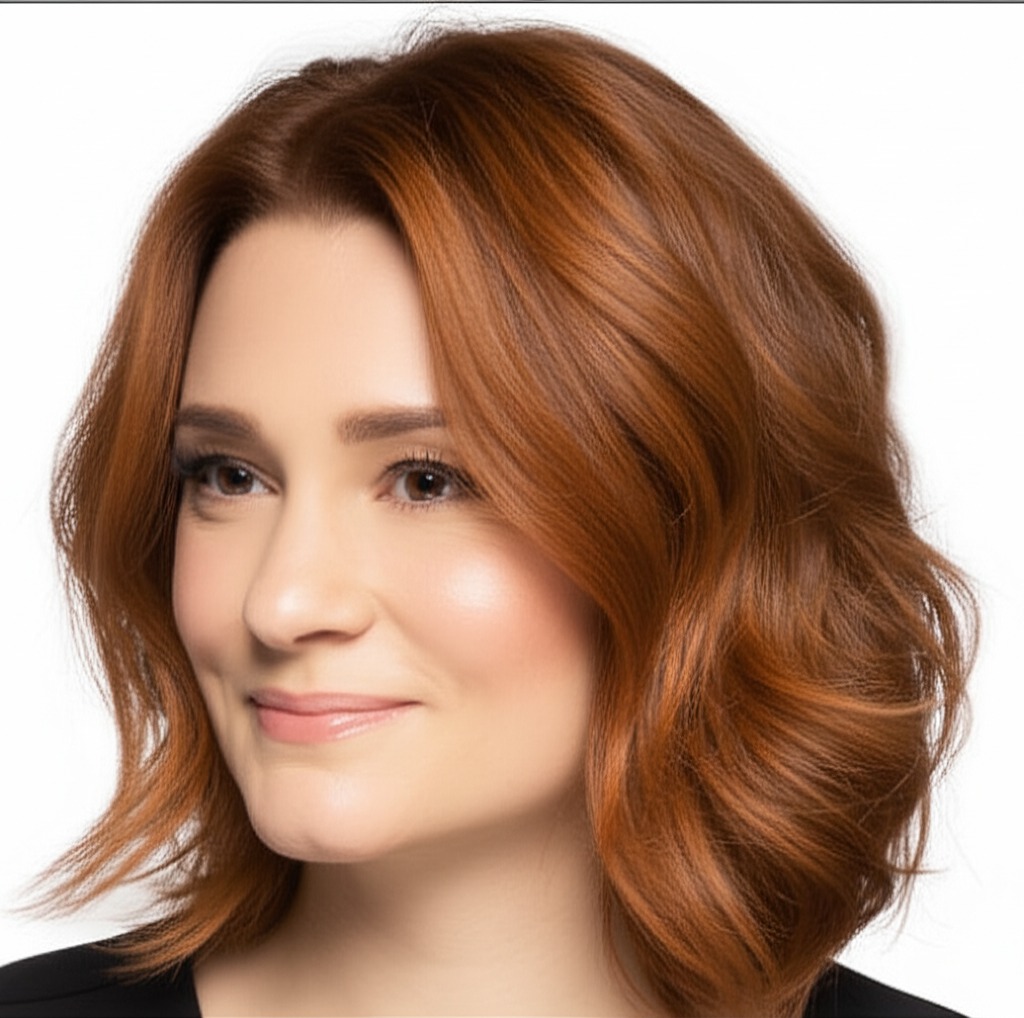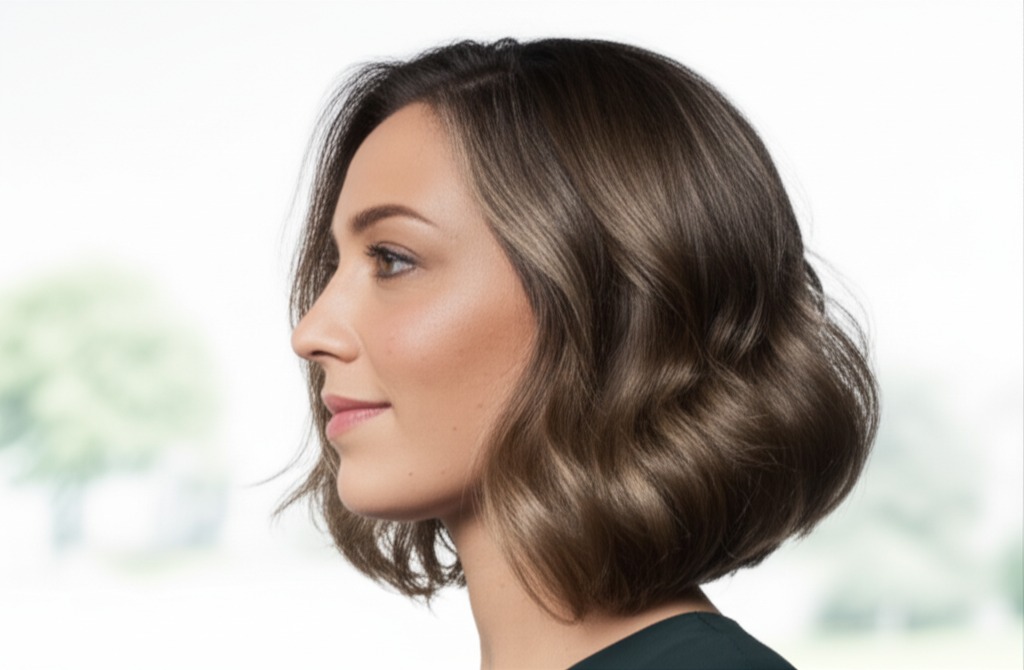#Ash Brown Hair Color: A Complete Guide
Ash brown is a hugely popular hair color for good reason – it’s sophisticated, flattering on many skin tones, and offers a beautiful natural look. But achieving the right ash brown requires understanding its nuances. This guide breaks down everything you need to know, from what “ash” really means to how to keep your shade looking fresh.
#1. Shade Definition: Understanding Ash Brown
Ash brown isn’t just one color; it's a family of shades defined by two key elements: undertone and depth.
- Undertone: This is the most critical part! "Ash" refers to a cool undertone. Think silvery, greyish, or muted – not golden or reddish. It’s what prevents your brown from looking too warm or brassy.
- Depth (Levels): Hair color levels range from 1 (black) to 10 (lightest blonde). Ash browns typically fall between Levels 3-7, depending on how dark or light you want to go. Here's a quick breakdown:
- Level 3-4: Dark Ash Brown – Rich and deep, often chosen by those with darker natural hair.
- Level 5-6: Medium Ash Brown – The most common choice; versatile for many skin tones.
- Level 7: Light Ash Brown - A softer, brighter option best suited to lighter starting levels or a more dramatic transformation.
#2. Who Does Ash Brown Flatter?
While ash brown can be adapted for many, certain features make it particularly stunning.
- Skin Tone & Undertone: This is KEY!
- Cool Skin Tones (pink, red, blue undertones): Ash brown looks amazing. Think fair skin with pink cheeks or olive skin with cool undertones.
- Neutral Skin Tones: Can often pull off ash brown, but the depth needs to be carefully considered. A medium ash brown is usually a safe bet.
- Warm Skin Tones (golden, yellow, peach undertones): Can sometimes work with ash brown, but it’s tricky! You need to ensure the coolness doesn't clash and create an overall muddy or ashy look. A very subtle ash brown gloss might be possible, but a warmer base is often better for these skin tones.
- Eye Colors: Ash brown complements most eye colors:
- Blue & Grey Eyes: The cool tones enhance the coolness in your eyes.
- Green Eyes: Creates a beautiful contrast and brings out the richness of green.
- Brown Eyes: Provides depth and dimension, especially with lighter ash brown shades.
- Natural Level Starting Points:
- Dark Hair (Levels 3-4): Requires more processing to achieve an ashy tone. A color correction might be needed to neutralize existing warmth.
- Medium Brown Hair (Levels 5-6): The easiest transition; often requires less drastic changes.
- Light Brown/Dark Blonde Hair (Levels 7-8): Can achieve ash brown with a single process or gloss, but maintaining the coolness can be challenging.
#3. Technique Options: Achieving Your Ash Brown Vision
How you apply the color significantly impacts the final result.
- Single Process: A uniform application of color from root to tip. Best for covering grey or achieving an even, solid ash brown shade on a relatively similar base level.
- Highlights/Lowlights: Adds dimension and depth. Cool-toned highlights can enhance the ashy effect; warmer lowlights (used sparingly!) might soften the coolness if you have a neutral skin tone.
- Babylights: Very fine, subtle highlights that mimic natural sun-kissed strands. Creates a soft, blended look – good for those wanting a gradual change.
- Gloss/Toner: A semi-permanent color deposit used to refine the overall tone and add shine. Essential for maintaining ashy tones (more on this later!).
- Balayage-Effect vs Solid: Balayage creates a softer, more natural look with blended roots and strategically placed lighter pieces. A solid application provides even coverage but can be less forgiving if your roots grow in.
#4. Maintenance & Longevity: Keeping Your Ash Brown Looking Fresh
Ash brown requires commitment!
- Wash Frequency: Less is more! Washing 2-3 times a week helps preserve color vibrancy.
- Toner Refresh: This is crucial. Cool tones fade quickly, so plan for toner applications every 4-8 weeks, depending on how fast your hair processes and the intensity of the ash shade.
- Root Growth Pacing: Discuss with your stylist how to best handle root regrowth. Options include blending (which can require more frequent touch-ups) or embracing a slightly grown-out look for a lower maintenance approach.
- Budget/Time Planning: Ash brown is typically a moderate to high investment. Expect salon visits every 6-12 weeks, plus the cost of color-safe products at home.
#5. Seasonality & Pairing with Cuts: Style Through the Year
- Spring/Summer: Lighter ash browns (Levels 7) look fresh and vibrant in warmer months.
- Autumn/Winter: Deeper, richer ash browns (Levels 3-5) create a cozy, sophisticated vibe.
- Cuts:
- Bob & Lob: Ash brown looks sharp and modern with these sleek cuts.
- Long Layers: Adds movement and dimension; the ashy tone will be beautifully highlighted by the layers.
- Pixie Cut: A bold choice, but ash brown can create a cool, edgy look on shorter styles.
#6. At-Home Care: Protecting Your Investment
- Sulfate-Free Shampoo & Conditioner: Sulfates strip color! Opt for gentle, sulfate-free formulas.
- Clarifying Cadence: While sulfates are bad, buildup is also a problem. Use a clarifying shampoo every few months (or as recommended by your stylist) to remove product residue.
- Heat Protection: ALWAYS use heat protectant spray before styling with hot tools.
- Color-Safe Styling Tips: Avoid harsh chemicals and excessive sun exposure, which can fade color. Rinse hair with cool water after washing to seal the cuticle.
- Product Checklist: Sulfate-free shampoo & conditioner, color-safe deep conditioner, heat protectant spray, purple shampoo (for neutralizing brassiness - use sparingly!), leave-in conditioner.
#7. Common Pitfalls: Avoiding Color Mishaps
- Brassiness: The biggest enemy! Warm pigments peek through the ash tone. Purple shampoos and toners are your allies.
- Banding: Uneven color application, often due to uneven product saturation or underlying warmth that wasn't fully neutralized. Requires a skilled stylist who can assess your hair’s condition properly.
- Patchiness: Occurs when the color doesn’t apply evenly – usually due to pre-existing damage or inconsistent porosity.
#8. Pros & Cons: Weighing Your Options
- Pros: Sophisticated, flattering on many skin tones, versatile (can be adapted for different levels of commitment).
- Cons: High maintenance (toner required), potential for fading and brassiness, can require more processing if starting with darker hair.
#9. Salon Consultation Script: Setting Expectations
Before you commit, discuss these points with your stylist:
- "I'm interested in an ash brown color. Can you assess my skin tone to determine the best shade?"
- “What is my natural level and how much processing will be required?”
- "How can we avoid brassiness and maintain a cool undertone?"
- "Can you explain the different application techniques (single process, balayage) and which would suit me best?"
- “What’s your recommended maintenance schedule for this color, including toner applications?”
- "Could you give me an estimate of the cost and time involved?"
#10. FAQs: Your Ash Brown Questions Answered
- Can I achieve ash brown on my own? While possible with careful research and quality products, it's best left to a professional, especially for significant color changes or darker starting levels.
- How often should I use purple shampoo? Overuse can lead to dullness! Start with once a week and adjust based on how quickly your hair turns brassy.
- What if my ash brown looks too grey? A gloss with slightly warmer (but still cool) pigments can soften the tone.
- Can I go lighter from ash brown in the future? Yes, but it may require multiple sessions and careful color correction to avoid damage.
- Will ash brown make my hair look flat? Not necessarily! Dimension through highlights or balayage can add movement and volume.
- My roots are growing in orange/red - what do I do? This is common with darker starting levels. Your stylist will need to perform a color correction, potentially involving multiple steps, to neutralize the underlying warmth before applying the ash brown tone.
Disclaimer: This information is for general guidance only and does not constitute professional hair styling or coloring advice. Always consult with a qualified hairstylist for personalized recommendations.
